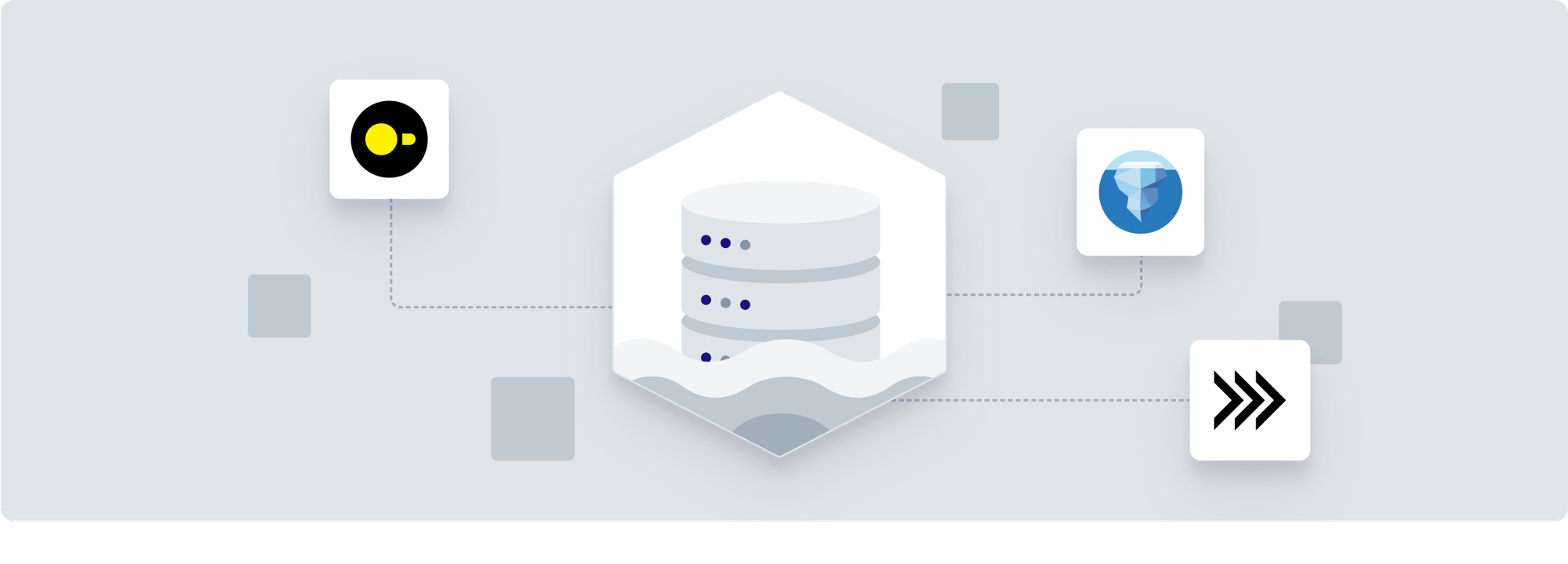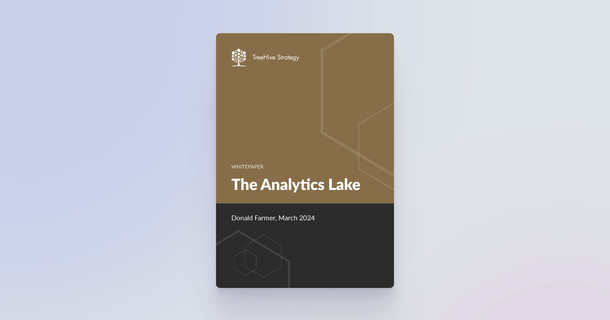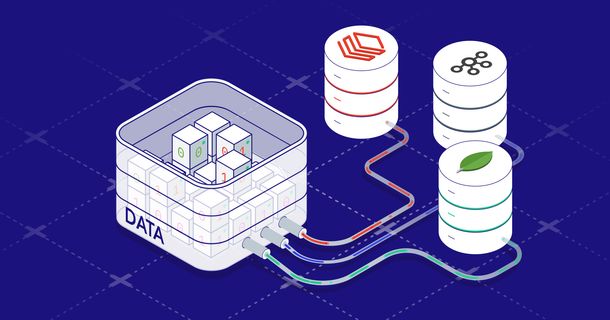The only data platform purpose-built for analytics
Deliver data isolation, scalability, and high-speed analytics in a single, lightweight system.

Simplify data access with a unified service layer
Granular multi-tenant isolation
Each tenant has its own in-memory data mart (FlexMart), ensuring strong data governance and exceptional performance.
Flexible real-time and batch
Real-time data streaming combined with in-memory batch processing for optimized performance, latency, and cost.
Modern and open lakehouse stack
With DuckDB, Iceberg, and Arrow, the Analytics Lake integrates seamlessly with existing ecosystems and avoids vendor lock.

Low cost, exceptional performance
The Analytics Lake delivers fast queries without the cost of a full-scale data warehouse.
Easy scalability and automation
Manage thousands of data pipelines, data marts, and analytics environments efficiently.
The unique purpose of an Analytics Lake
The Analytics Lake is designed to integrate with raw data from a data lake and structured data from a data warehouse to provide advanced analytics, comprehensive business intelligence, and accurate predictive insights, driving better decision-making and outcomes.
| Analytics Lake | ||
|---|---|---|
| Solution | ||
| Primary Focus | ||
| Scalable raw data storage | Business reporting and decision-making | Analytics and machine learning |
| Storage Format & Optimization | ||
| Optimized for low-cost storage of large raw, unstructured data | Structured data optimized for query performance | Optimized compute for ML workflows |
| Metadata & Semantic Layers | ||
| Limited metadata and semantics | Typically has integrated business metadata | Integrated metadata and headless semantic layer |
| BI & Visualization Capabilities | ||
| Minimal BI support | Full support for BI workflows and visualizations | Integrated BI and visualizations environment |
| Advanced Analytics Support | ||
| Strong support for advanced analytics | Basic predictive modeling capabilities | Optimized for advanced analytics and ML |
| Data Science & ML Support | ||
| Supports data science through big data tools | Limited support for data science workflows | Tailored for data science and ML with compute optimization and APIs |
| Compliance & Governance | ||
| Limited governance capabilities | Strong auditing, security, and governance capabilities | Robust governance through metadata integration |
| APIs & Programmatic Access | ||
| Access via big data APIs and notebooks | Traditionally accessed through SQL | APIs designed specifically for analytics engineers |
| Cost Efficiency | ||
| Very low-cost storage but unpredictable analytics costs | Predictable but relatively high storage costs | Optimized processing reduces overall costs |
| Flexibility & Future Proofing | ||
| Flexible but typically requires migration for BI use | Schema-on-write limits flexibility | Designed to interoperate with multiple data platforms |
| Key Strengths | ||
| Scalability, cost efficiency for storage | Performance, consistency, reliability | Purpose-built for advanced analytics and ML |
| Key Limitations | ||
| Challenging to apply governance or reuse data for BI and reporting | Limited flexibility and ability to handle messy, large, or streaming data | Emerging architecture |
| Solution | Data Lake | Data Warehouse | Analytics Lake |
|---|---|---|---|
| Primary Focus | Scalable raw data storage | Business reporting and decision-making | Analytics and machine learning |
| Storage Format & Optimization | Optimized for low-cost storage of large raw, unstructured data | Structured data optimized for query performance | Optimized compute for ML workflows |
| Metadata & Semantic Layers | Limited metadata and semantics | Typically has integrated business metadata | Integrated metadata and headless semantic layer |
| BI & Visualization Capabilities | Minimal BI support | Full support for BI workflows and visualizations | Integrated BI and visualizations environment |
| Advanced Analytics Support | Strong support for advanced analytics | Basic predictive modeling capabilities | Optimized for advanced analytics and ML |
| Data Science & ML Support | Supports data science through big data tools | Limited support for data science workflows | Tailored for data science and ML with compute optimization and APIs |
| Compliance & Governance | Limited governance capabilities | Strong auditing, security, and governance capabilities | Robust governance through metadata integration |
| APIs & Programmatic Access | Access via big data APIs and notebooks | Traditionally accessed through SQL | APIs designed specifically for analytics engineers |
| Cost Efficiency | Very low-cost storage but unpredictable analytics costs | Predictable but relatively high storage costs | Optimized processing reduces overall costs |
| Flexibility & Future Proofing | Flexible but typically requires migration for BI use | Schema-on-write limits flexibility | Designed to interoperate with multiple data platforms |
| Key Strengths | Scalability, cost efficiency for storage | Performance, consistency, reliability | Purpose-built for advanced analytics and ML |
| Key Limitations | Challenging to apply governance or reuse data for BI and reporting | Limited flexibility and ability to handle messy, large, or streaming data | Emerging architecture |
Dive deeper into the details
Learn more
Learn more about the Analytics Lake vision

















